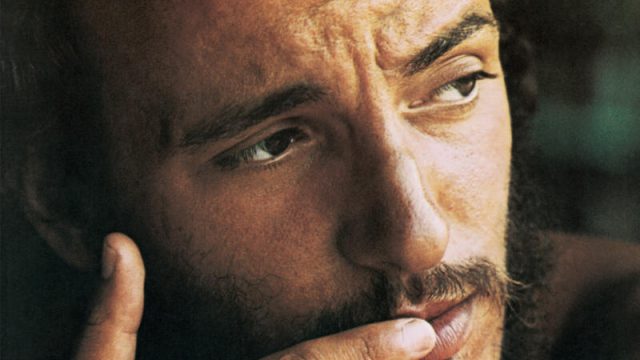Bruce Springsteen’s second full-length, The Wild, the Innocent & the E Street Shuffle (believe me, that’s the last time I’m typing that out in full), may be the most important album in Springsteen’s development until probably 1982’s Nebraska. This is because Wild is the first album to feature the legendary E Street Band in its totality. And it’s an album that’s proud of it–I mean, it’s right there in the title.
Largely throwing off the folk stylings of Greetings From Asbury Park, N.J., Wild is soulful rock with an enormous sound, complete with deep, virtuosic backing band: there are saxes of all varieties, pianos, organs, string arrangements, clavinets, accordions, congas, mandolins, a mother-loving tuba–often all on the same song. This is it, a crashing-out-the-gates thunderous declaration of principles: loud, brash, swooningly romantic, ambitious, and polished in a way that absolutely anticipates what people meant by “Bruce Springsteen music” for the rest of the ’70s. There were hints of this on Asbury Park–touches of saxophone and the jazzy looseness of a band much bigger than Bruce was working with at that time. But as I mentioned in the review of that album, that sound feels still in the womb there. It’s here that Bruce Springsteen became Bruce Springsteen.
But would everybody be terribly angry if I also said that this album represents Bruce Springsteen’s sophomore slump?
Look, there are some terrific tracks on here: “4th of July, Asbury Park (Sandy)” and “Incident on 57th Street” are both excellent, R&B-tinged ballads (the latter being, in fact, the Wild track that most closely sounds like Bruce’s next few albums), and “Rosalita (Come Out Tonight),” the best track on the album by a country mile, is a classic desrving its heavy rotation in the Boss’s live setlists (ironically for an album intent on leaving the previous release in the dust, it’s the most Asbury Park song on the album). And I even like the tuba oddity, “Wild Billy’s Circus Story,” probably among the top five songs about circus performers in the rock canon.
But any review of The Wild, the Innocent & the E Street Shuffle (typed it all again, mom’s proud) is going to have to take some sort of position on “Kitty’s Back,” sort of the album centerpiece, a jazz-fusiony jam-band rocker, and, as far as this reviewer is concerned, a certified Bad Song. I’m generally a defender of jazz-fusion and electric organs and every other ’70s trend this song throws into its blender, but good golly, this is just not Bruce Springsteen’s scene. The song sticks out horribly, and I skip it every time. Better is “New York City Serenade,” the 10-minute closer, but not that much better. This one is the more disappointing of the two–“Kitty’s Back” is Springsteen being bad at something he never does, but with “New York Serenade,” you have a mediocre example of two things that Bruce reliably hits out of the park later in his career: the sprawling urban ballad and the album closer. But “New York Serenade,” unfortunately, is only a meandering montage of snapshot character portraits that never add up to much, with a string arrangement that, I’m sure, is meant to evoke some of the all-time-great string-assisted album-closing epics (“Moonlight Mile” feels like a touchstone) but without a strong melody to ground it to the song ends up just feeling kind of maudlin.
The rest of the album is all varying shades of good to great, but between “Kitty’s Back” and “New York Serenade,” that’s 17 minutes of whiff here, well over one third of the record. I realize that with both this one and Asbury Park, I’m reviewing from the perspective of the rest of his career and that taken on their own, each is probably stronger than I’m giving it credit for. But I can’t help it. Besides, I like Asbury Park better. Deal with it.

